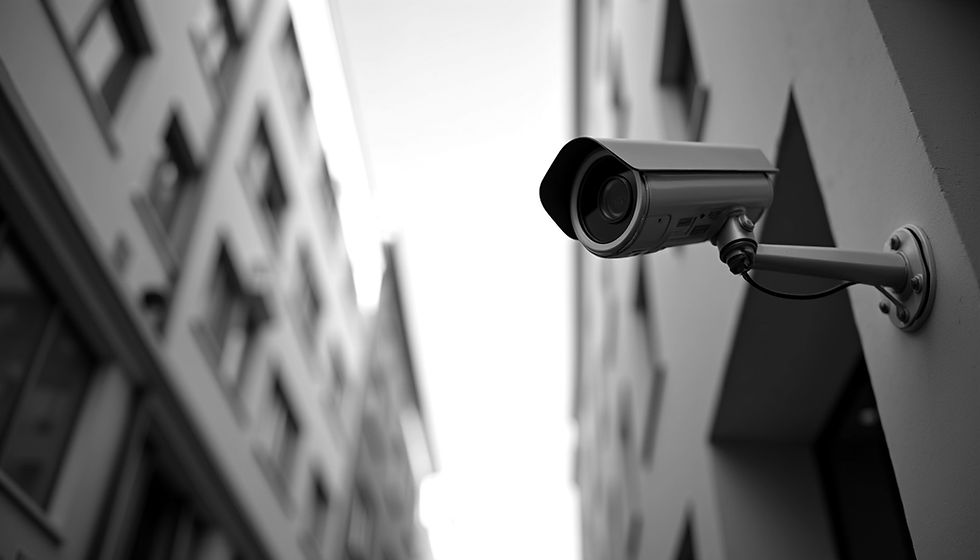Effective Surveillance Strategies for Enhanced Security and Operational Success
- SIASS

- Sep 8
- 4 min read
In today’s world, where threats to security are increasing and evolving, organizations must take surveillance seriously. Implementing effective surveillance strategies is more than just a precaution; it’s a necessity. Those who invest in solid strategies not only protect their assets but also enhance their overall operational efficiency. This article delves into the phases of a successful surveillance strategy: planning, execution, and evaluation, while also exploring future trends in technology that can elevate these systems.
Planning Phase
Risk Assessment
The heart of any effective surveillance strategy is a detailed risk assessment. This step means identifying threats that could disrupt operations or endanger security. For example, organizations might discover that over 40% of their security incidents originate from specific areas, such as parking lots or entrances. By identifying these high-risk zones, organizations can focus surveillance efforts on them.
A comprehensive risk assessment helps prioritize resources and identify which threats are most pressing. Not only does this make the surveillance efforts more efficient, but it also ensures a better allocation of budgets and human resources.
Resource Allocation
After assessing risks, the next step is resource allocation. This means choosing the right technology and assigning personnel based on the needs identified during the risk assessment.
For instance, if an organization decides to monitor high-traffic areas, selecting motion-sensor cameras could be beneficial. Alternatively, employing trained security personnel can add a layer of security that technology alone might not provide. Smartly allocating resources maximizes surveillance effectiveness, while also keeping within budget constraints.
Legal Compliance
Compliance with laws and regulations is crucial in any surveillance strategy. Organizations must obtain proper permissions and ensure they adhere to laws regarding surveillance, data protection, and privacy.
For example, failing to comply with the General Data Protection Regulation (GDPR) can result in fines up to €20 million or 4% of global annual turnover, whichever is higher. Understanding these legal frameworks is essential to prevent legal repercussions and reputational damage.
Execution Phase
Deployment
The execution phase kicks off with deploying surveillance equipment effectively. This includes installing technology with minimal disruption to day-to-day operations.
For example, strategically placing cameras in lobbies might provide a comprehensive view of customer interactions without interfering with the flow of business. Ensuring that systems integrate well with existing infrastructure is essential; careful planning is key to achieving successful deployment.
Operational Security
During the execution phase, maintaining operational security is vital. It is essential to keep the details of surveillance operations confidential.
Training personnel on security practices is a proactive measure. Organizations can reduce the risk of leaks by implementing strict protocols around sensitive information. This prioritization enhances the effectiveness of surveillance measures by reducing vulnerabilities.
Data Management
Managing data is another crucial component of the execution phase. Organizations should secure collected data effectively to maintain its relevance and rigor.
Implementing a data management system that allows easy access and integrity checks will ensure high-quality information. Research shows that organizations that employ solid data management practices see a 25% increase in the effectiveness of their analysis and decision-making processes.
Evaluation Phase
Analysis
The evaluation phase is centered around data analysis. Organizations need to focus on extracting actionable insights from the collected data to inform future security measures.
Using advanced analytics tools can help identify patterns. For instance, recognizing that 60% of incidents happen during specific hours can allow organizations to adjust their resources accordingly.
Reporting
Once data is analyzed, the next step is effective reporting. Detailed reports should summarize key findings and offer actionable recommendations to stakeholders.
Such reports not only clarify the value of surveillance efforts but also help inform necessary actions. Transparency in reporting fosters accountability and ensures stakeholders understand the implications of surveillance data.
Review
Finally, reviewing the surveillance operation's effectiveness is critical. Organizations must assess the entire process, identifying successes, shortcomings, and lessons learned.
This approach helps in continual improvement and adaptability. For example, organizations that regularly review their strategies are 30% more likely to adapt successfully to new threats.
Future Trends in Surveillance Technology
Surveillance technology is constantly evolving and introducing new capabilities. Here are some emerging trends that organizations should be aware of:
Enhanced Miniaturisation
Smaller surveillance devices are making it easier to discreetly monitor areas without drawing attention. This level of miniaturization allows for more flexible and unobtrusive operations.
Improved Connectivity
The integration of 5G technology is transforming surveillance. Enhanced connectivity enables real-time data transmission and improves response times to incidents. Organizations utilizing this technology often report a 50% increase in incident response efficiency.
Advanced Analytics
Big data analytics are becoming increasingly vital in surveillance efforts. This technology allows organizations to predict behaviors and threats more effectively, which leads to a more proactive response.
Biometric Surveillance
The rise of facial recognition and biometric identification technologies brings both advantages and ethical concerns. While these tools improve identification accuracy, organizations must navigate privacy issues carefully.

Final Thoughts
Surveillance strategies are crucial for protecting assets and ensuring operational success. By systematically addressing planning, execution, and evaluation, organizations can develop effective and compliant surveillance measures.
Staying updated with emerging technologies is vital for enhancing capabilities and addressing ethical concerns. With a proactive approach to surveillance, organizations can cultivate a safer environment for their employees and customers alike.




Comments